style=”flat” size=”4″]The ‘Seven Wonders of the World’ is an annoying list, as there are far more than seven things on it. The ancient wonders include the Hanging Gardens of Babylon, the Great Pyramid of Giza and the Lighthouse of Alexandria, among other dusty but magnificent relics, while updated lists have brought such marvels as Stonehenge, the Great Wall of China and the Taj Mahal to the party; then people start talking about the ‘New Seven Wonders’ – the Golden Gate Bridge, the Channel Tunnel, the internet – and it all starts to get a bit silly. But the single element that ties all of these together is that they’re man-made things that really shouldn’t exist at all, owing to the complexity and improbability of their coming into being. And with that criterion in mind, it’s only fair to add the BMW M1 to the list.
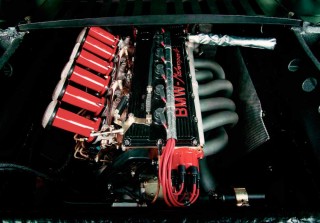
Simply looking at it should be all the justification you need (and if you’re still wavering, hearing it is pretty special too), but it’s the story of its gestation that truly helps the M1 to qualify as a bona fide Wonder. Back in 1972, Paul Bracq developed a concept car for BMW, the BMW Turbo, which evolved into the M1 with Jochen Neerpasch’s hand on the tiller: designed by Giorgetto Giugiaro, Lamborghini was contracted to hammer together 400 cars for Group 4 racing homologation. But Lamborghini’s finances were shaky back then, and BMW had to cancel the contract thanks to the supercar manufacturer, er, going bankrupt. Bit of a setback. So a new plan was devised, with a serpentine structure that meant Marchese would build tubular frames while TIR crafted the fibreglass bodies; Ital Design would marry the two and install the interior. This would then be sent to Baur for engine and transmission installation, before being shipped to BMW’s M Division to add its own finishing flourishes.
By the time all this had happened, the M1’s intended race series had dissolved into the ether, so Neerpasch set up Procar – a series in which the top five F1 qualifiers would compete against 15 privateers. Ultimately 430 M1s were built, with 40 M1 Procars specifically for racing. In a nutshell, then, a tortured and absurd evolutionary process resulting in a car that shouldn’t exist, almost didn’t, and is now pretty damn obscure.

We should all, however, be grateful that it does. And thanks to the efforts of California-based dreamweavers Canepa, this particular example is the candidate we’d put forward as the Eighth Wonder of the World. It’s as close as it’s possible to get to finding a life-size Hot Wheels toy; a car that marries road car M1 appointments with Procar aggression, and looks for all the world like something you’d buy in a colourful blister pack in Toys ‘R’ Us.
“This is a one-of-a-kind, road-going Procar, one of the original 40 Procar M1 chassis,” explains Canepa’s resident historian John Ficarra. “It started life as a spare car for the Procar Championship racing series, but M1 #094 would never see the race track. It would later be assembled as a road car by BMW and delivered to the dealer BMW AG Niederlassung, where it was sold as a series production car; its first owner from Mainz, Germany purchased it in November 1979. In October ’81 it moved on to what’s believed to be the first owner’s daughter, and it was then sold to an artist who used the car as a canvas featured in expositions and newspapers.”
The M1 is an unusual car, but 094 enjoyed a more unusual start than most. By 1983 it found itself at the German BMW dealer, AHG, which fitted its special Studie package – company owner Peter Gartemann envisaged a road-going interpretation of the Procar as a sort of design study, limited to just ten units and available only to well-heeled enthusiasts and factory race drivers. The cherry on the cake was an Art Carstyle paint job by German wizard Hermann Altmiks.
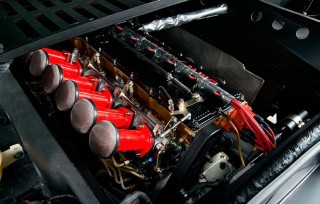
In this outlandishly decorated guise, the car enjoyed a relatively high-profile lifestyle after being brought over to the USA in early 1984; its new owner, a collector, was active in the BMW scene until the late- ’90s, at which point it was decided to put the M1 into long-term storage. But this hibernation period wasn’t an ignominious or unfair coda to the life of an outrageous Bavarian curio – it was simply playing the waiting game. Because when the car emerged in 2012, big things were in store for it…
“094 was brought to Canepa, at which point it was thoroughly examined,” says John. “Its physical condition called for a complete resto, so the car was disassembled and work began on a full ground-up restoration. The car was found to be corrosion-free, and had never been involved in an accident.
Furthermore, during the process of disassembly, interesting telltales of 094’s Procar genesis began to surface: holes for the original wing under the paint, adjustable suspension points, deletion of the door pads for the electric mirrors, and various Procarspecific brackets. So, upon confirming its history, the decision was made to build it into a Procar, completing its destiny from 37 years earlier. The only twist would be that this would be a Procar for the street.” What Canepa were planning here, in essence, was a sort of double-whammy of historical impact. That early conversion by AHG sought to create a roadgoing racer, but the plan now was to take that concept a stage further, to fulfil the car’s destiny as a genuine race car while also respecting its history as a road-legal machine. And so the experts set to work.
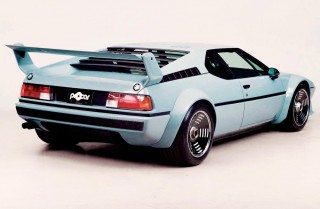
Now, Canepa is nothing if not thorough – it’s what makes it world-class – so it seemed logical to the company to bring a genuine Procar into the shop in order to measure and photograph every element, to ensure accuracy in its own build. Its goal was to incorporate as many genuine, period parts as possible, which is why rooting around inside the car today will reveal pukka Procar suspension uprights, hubs, control arms, tie rods, axles, and mirrors, along with that iconic body kit and rear wing. The BBS centre-locks are correct too, their centres having been crackchecked and the outers rebuilt with new rims.
Of course, no matter how dedicated the team and how pure the intent, it’s a fact of restoration reality that finding parts for old race cars doesn’t always go the right way – particularly when the car in question is so obscure and short-lived. In this case, the unobtainium presented itself in the form of the original Procar brake callipers. They just can’t be found. But fear not, because Canepa is a hotbed of lateral thinking…
“We fitted larger Brembo callipers, of the type found on the Porsche 962,” John explains, doing an admirable job of keeping a straight face as he reveals this ineffably impressive piece of news. “These callipers clamp down on 13-inch Porsche 935 discs attached to original Procar bells. The increase to 17- inch rims allow for ample spacing for the new callipers, and at all four corners are custom Penske coilovers – thanks to the factory-installed adjustable suspension points the car sits low, and with a stance that befits a Procar.” Yes, there’s certainly no arguing with that. And with all of this going on, there was further mischief afoot in the engine bay.
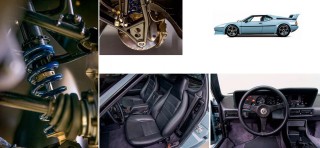
“The M88 motor was sent out to VAC Motorsports for a high performance rebuild,” he continues. “It’s now fitted with period Motec electronic fuel injection, and is putting out 414hp and 357lb ft (360hp and 310lb ft at the wheels); the fuel injection was cleverly hidden, and the engine retains its stock mechanical injection look. The ZF five-speed manual transaxle was rebuilt by Vintage Racing Motors Inc, and all the gauges were rebuilt and now show a 7700rpm redline, as well as a 200mph speedometer.”
The M1 Procar’s trump card, naturally, is its sense of visual drama. One might argue that this car has enjoyed this element more than most, thanks to its faux-Art Car past, but Canepa’s plan was to amp up the period drama with a certain understated flair. Well, as understated as a 1970s supercar with a whacking great spoiler on the back is possible to be! Hundreds of hours were spent blocking the fibreglass shell to ensure everything was laser-straight, and the reassembly was painstaking to ensure that the panel gaps were better than factory standard. “We went as far as giving the normally unseen chassis rails a concours finish,” John explains. “The front flares on the original Procars were slightly oversized in the day, and we took the opportunity to narrow and reshape them so they fit over the wheels more accurately, and better match the proportions of the rears.”
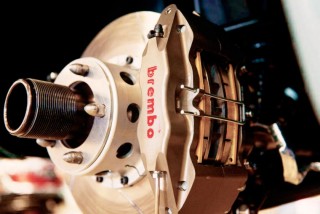
And the real visual hook, the thing that serves up the most intense hit of drama, is the colour choice. It’s Basalt Blau, a factory BMW shade that was never offered to the public on an M1, but was featured on four special examples built for BMW board members. When we spoke of this being like a lifesize Hot Wheels toy, it’s the paint hue more than anything that fulfils the devastatingly rakish aesthetic.
While the car’s been fastidiously hand-crafted to concours standard, the artisans at Canepa couldn’t help themselves from having a little fun with it; sure, it’s so flawless it’ll make BMW historians weep with joy, it’s not 100 percent true to how a Procar would have rolled off the assembly block. You knew this anyway, of course, given that it’s both a road car and a race car in one – but this did allow the restoration team a little scope for creativity.
“We added numerous custom touches to the build,” says John. “Most noticeable are the dry-break fuel fillers behind the rear buttress quarterlights. Machined from billet aluminium, these functional drybreaks can also spin off like traditional fuel caps allowing the car to be filled at any gas station! And fitted to the original wheels are period-looking, handmade wheel fans. Also, to give the car a clean, finished look, all the body fasteners were hidden.”
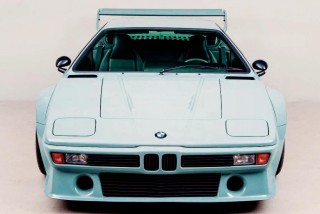
The final piece of this fantasy-garage jigsaw puzzle came in the form of the interior, as clearly it couldn’t be a stripped-out cavern if it were to be a genuinely usable road car. So the Canepa upholsterers retrimmed the tasteful 1970s guts in soft black leather, with grey stitching to complement the paint, after the whole cabin had been treated to a festival of modern heat and sound insulation. The ashtray, electric mirror switch, door air vents, and manual window caps were deleted in order to tidy things up, and the carpets are now of a fine wool pile in a darker shade of grey.
“The completed car made its debut in the paddock of the 2016 Rolex Monterey Motorsports Reunion,” John beams, “and it was an immediate hit.” We don’t doubt it. It takes a very brave team to tear apart a car of such rarity and with such a bizarre back-story, but this is no ordinary team: the sympathy of the concept and the quality of the work have written a new chapter in 094’s history. Truly, justifiably, one of the world’s great wonders.
CONTACT Canepa Web: www.canepa.com
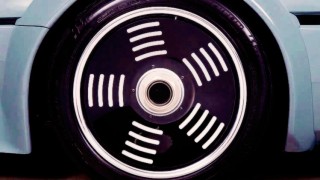 The underside of the M1 has been treated to the same attention to detail as the bodywork; brakes are Porsche 962 and 935 items. Everything about Canepa’s M1 screams quality – from the exquisite engine bay to the front compartment and the neat fuel fillers.
The underside of the M1 has been treated to the same attention to detail as the bodywork; brakes are Porsche 962 and 935 items. Everything about Canepa’s M1 screams quality – from the exquisite engine bay to the front compartment and the neat fuel fillers.
“During the process of disassembly, interesting telltales of 094’s Procar genesis began to surface…”
“Upon confirming its history, the decision was made to build it into a Procar, completing its destiny from 37 years earlier”
TECHNICAL DATA FILE BMW M1 Procar E26
ENGINE AND TRANSMISSION: M88/1 3.5-litre straight-six, Motec electronic fuel injection, ZF five-speed manual transaxle
CHASSIS: 10×17-inch (front) and 12.5×17-inch (rear) period BBS centre-locks with custom wheel fans; 265/40 (front) and 335/35 (rear) Michelin Pilot Sport tyres, Porsche 962 Brembo callipers with Porsche 935 discs, custom Penske coilovers
EXTERIOR: Full body restoration, modified Procar aero kit, Basalt Blau paint
INTERIOR: Full modern heat and sound deadening, full retrim in black leather, grey wool carpets, ashtray, electric mirror switch, door air vents, and manual window caps deleted





